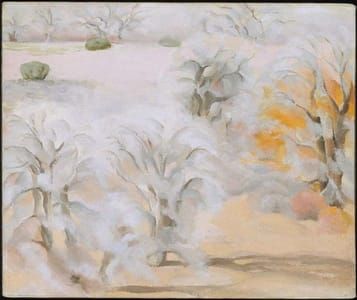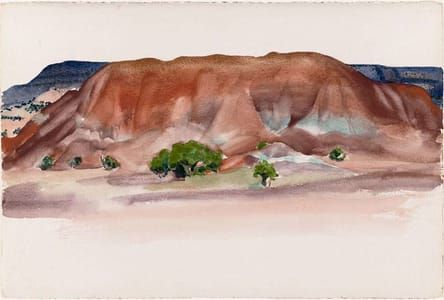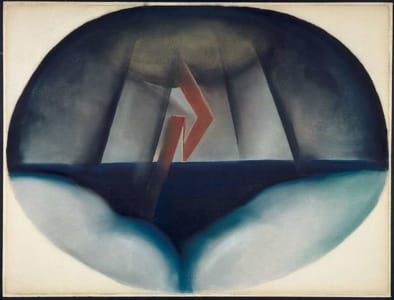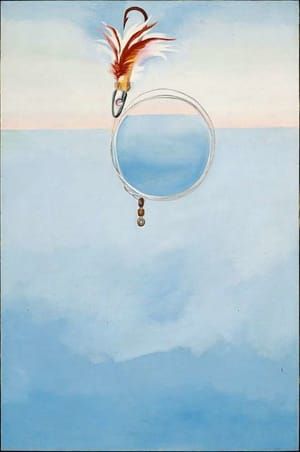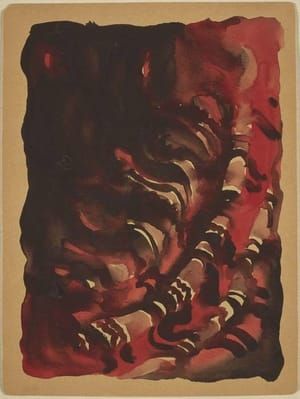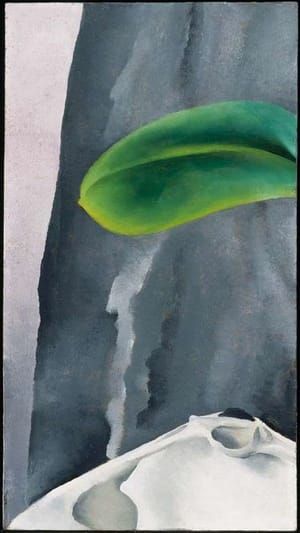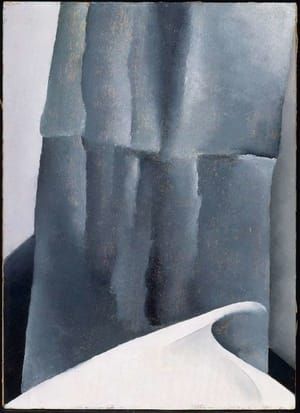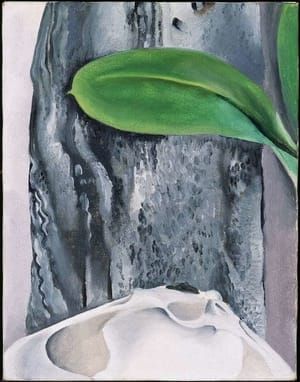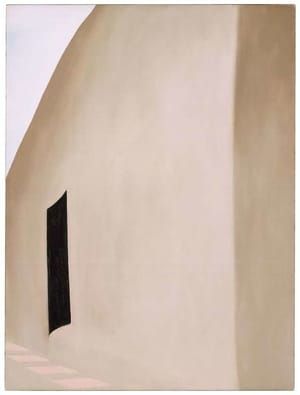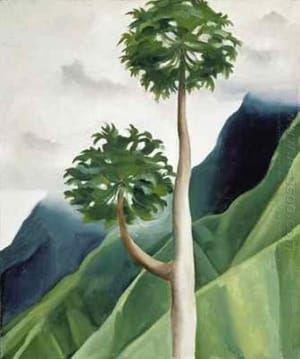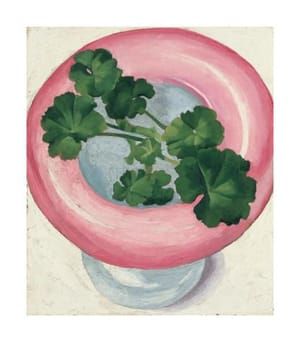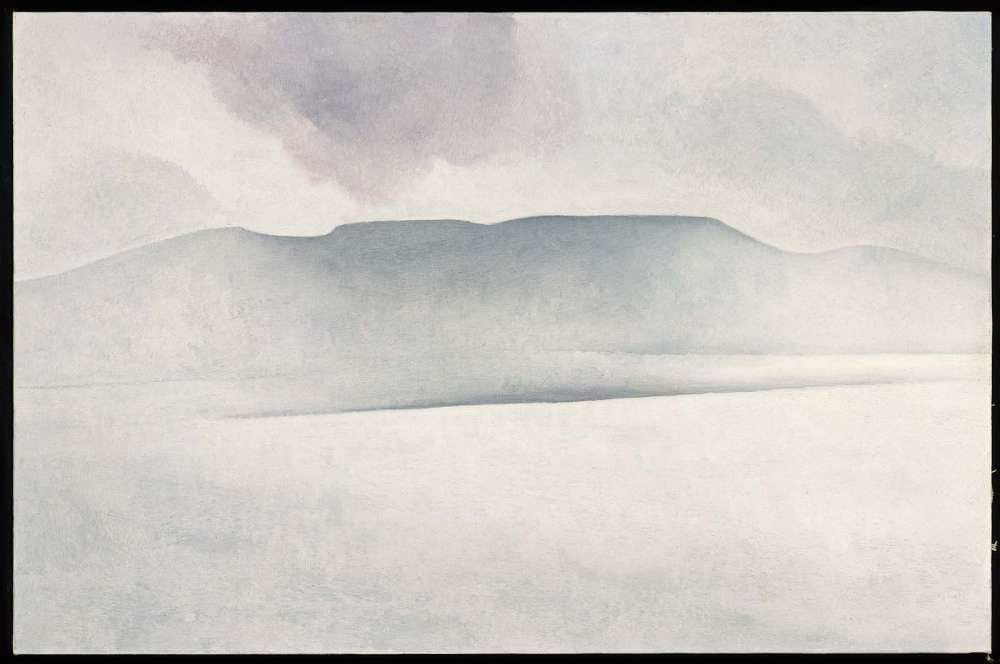

Shell and Old Shingle No. VII, 1926
Georgia O'Keeffe
Georgia O’Keeffe’s Shell and Old Shingle series is the artist’s most sustained investigation of the relationship between realism and abstraction. The series begins with Shell and Old Shingle No. I, a detailed representation of a white clam shell leaning against a weathered gray shingle, and progresses into an exploration of abstract shapes suggested by the original arrangement. The culmination is this canvas, Shell and Old Shingle No. VII, a gray landscape that echoes the forms of the shell and shingle (turned sideways). In this way, the paintings demonstrate how natural objects inspired O’Keeffe’s abstractions, and suggest an unexpected visual connection between the very small (a tabletop still-life) and the very large (a mountain range). The paintings were not originally conceived in an ordered sequence; only later did O’Keeffe recognize the relationships between the works. At that point, she numbered each painting on the reverse.
O’Keeffe described her inspiration for painting this group of works in her 1976 book "Georgia O’Keeffe." Usually quite laconic in discussing her artistic process, she was moved to describe the genesis of this series at length:
"We were shingling the [Lake George, New York] barn and the old shingles, taken off, were free to fly around. Absentmindedly I picked up a loose one and carried it into the house and up to the table in my room. On the table was a white clam shell brought from Maine in the spring. I had been painting it and it still lay there. The white shape of the shell and the grey shape of the weathered shingle were beautiful against the pale grey leaf on the faintly pink-lined pattern of the wallpaper. Adding the shingle got me painting again. After the first realistic paintings I painted just a piece of the shingle and a piece of the shell. To a couple were added quite large green leaves that were in a glass on the table. Finally I went back to the shingle and shell—large again—the shingle just a dark space that floated off the top of the painting, the shell just a simple white shape under it. They fascinated me so that I forgot what they were except that they were shapes together—singing shapes. I find that I have painted my life—things happening in my life—without knowing. After painting the shell and shingle many times, I did a misty landscape of the mountain across the lake, and the mountain became the shape of the shingle—the mountain I saw out my window, the shingle on the table on my room. I did not notice that they were alike for a long time after they were painted."
The mountain landscape O’Keeffe described was near the Stieglitz family’s compound at Lake George, New York, where she painted the Shell and Old Shingle group. O’Keeffe and her husband, photographer and art dealer Alfred Stieglitz, regularly spent several months each year during the 1920s at Lake George, using the location as a retreat from the fast pace of New York City. Stieglitz loved Lake George, but O’Keeffe sometimes found it difficult to coexist with the many in-laws who filled the house during the summer months. O’Keeffe most directly referenced the Stieglitz family in Shell and Old Shingle No. IV, executing it on the reverse of an older work that has been attributed to Edward Stieglitz, Alfred Stieglitz’s father. O’Keeffe never knew Edward, who had died in 1909, but she probably found the old panel stored at Lake George and chose to reuse it.
The Museum of Fine Arts, Boston, owns five of the seven Shell and Old Shingle paintings. These works remained in O’Keeffe’s personal collection throughout her life, and were a bequest to the MFA upon her death in 1986. The other two Shell and Old Shingle paintings were sold during O’Keeffe’s lifetime. Shell and Old Shingle VI was sold in 1929 to a New York collector (now in the collection of the Saint Louis Art Museum, Missouri); O’Keeffe used the proceeds to purchase her first car, a Model A Ford, which she used to explore New Mexico. Shell and Old Shingle V was purchased from the artist in 1958 by a private collector located in New Jersey; it is now in the collection of the Museo Thyssen-Bornemisza, Madrid.
Heather Hole
Provenance
[http://www.mfa.org/collections/object/shell-and-old-shingle-no-vii-34868]
Uploaded on Jan 10, 2018 by Suzan Hamer
Georgia O'Keeffe
artistArthur
coming soon

